Abstract
An experimental technique is presented for studying aerosols generated from lyophilized bacteria by using Escherichia coli B, Bacillus subtilis var. niger, Enterobacter aerogenes, and Pasteurella tularensis. An aerosol generator capable of creating fine particle aerosols of small quantities (10 mg) of lyophilized powder under controlled conditions of exposure to the atmosphere is described. The physical properties of the aerosols are investigated as to the distribution of number of aerosol particles with particle size as well as to the distribution of number of bacteria with particle size. Biologically unstable vegetative cells were quantitated physically by using 14C and Europium chelate stain as tracers, whereas the stable heat-shocked B. subtilis spores were assayed biologically. The physical persistence of the lyophilized B. subtilis aerosol is investigated as a function of size of spore-containing particles. The experimental result that physical persistence of the aerosol in a closed aerosol chamber increases as particle size is decreased is satisfactorily explained on the bases of electrostatic, gravitational, inertial, and diffusion forces operating to remove particles from the particular aerosol system. The net effect of these various forces is to provide, after a short time interval in the system (about 2 min), an aerosol of fine particles with enhanced physical stability. The dependence of physical stability of the aerosol on the species of organism and the nature of the suspending medium for lyophilization is indicated. Also, limitations and general applicability of both the technique and results are discussed.
Full text
PDF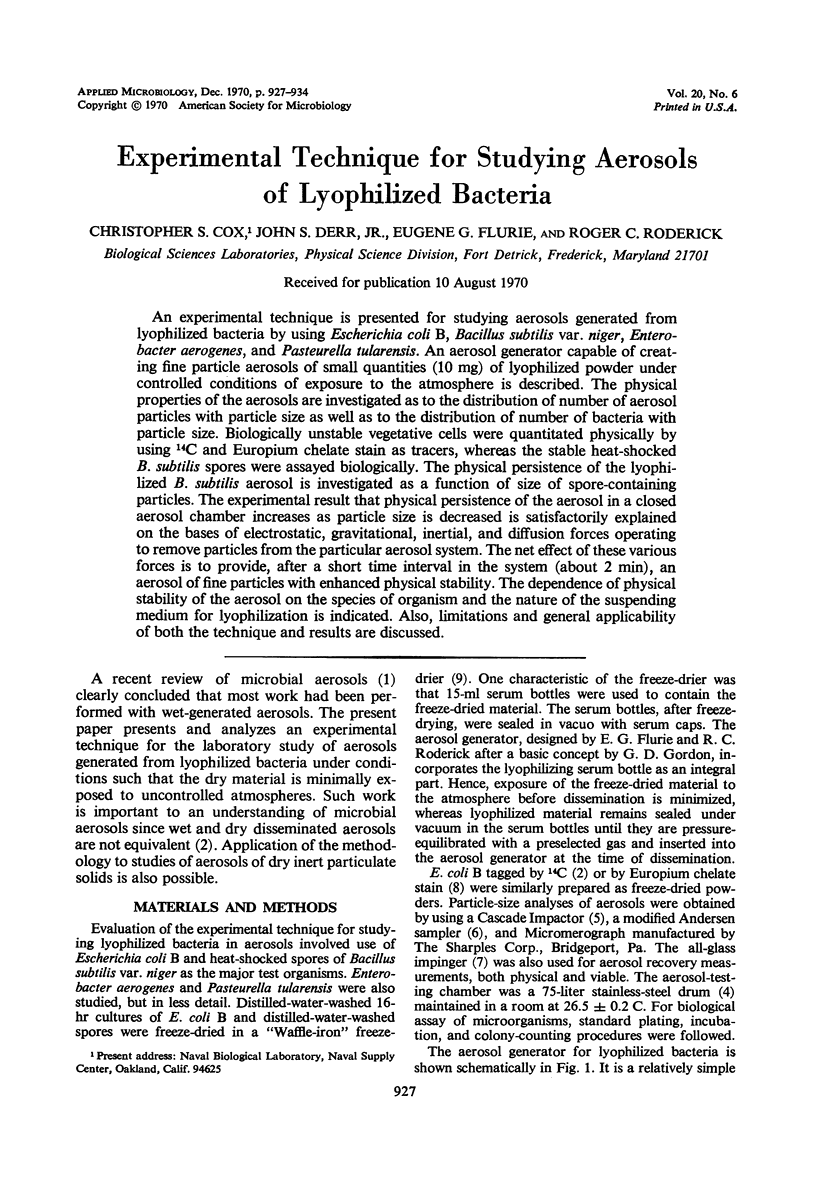
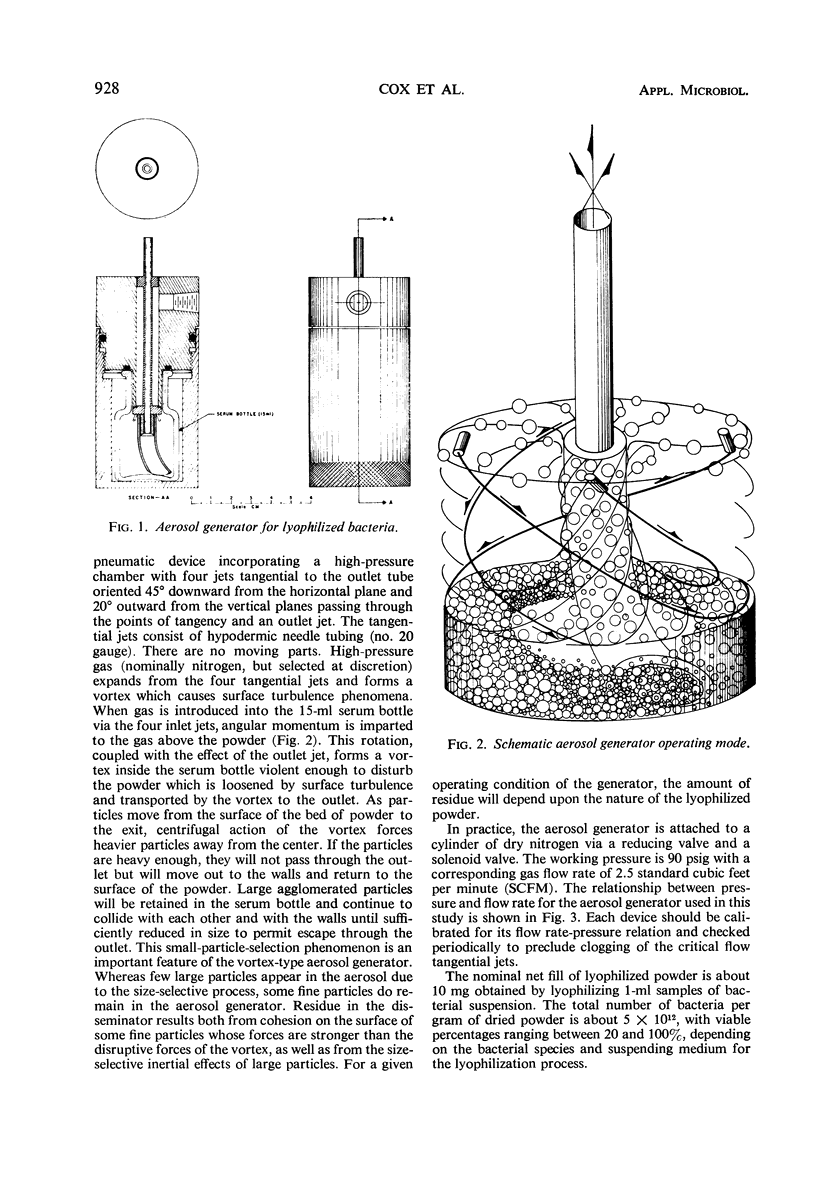
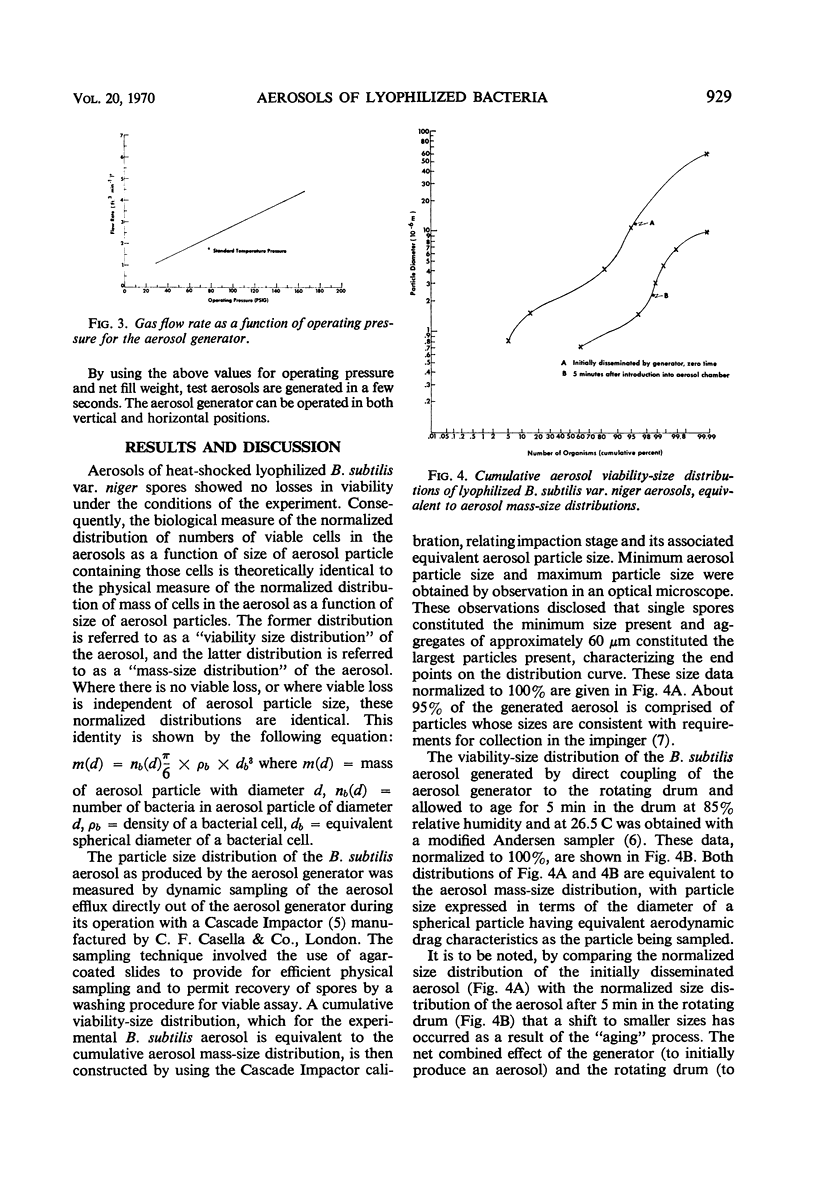
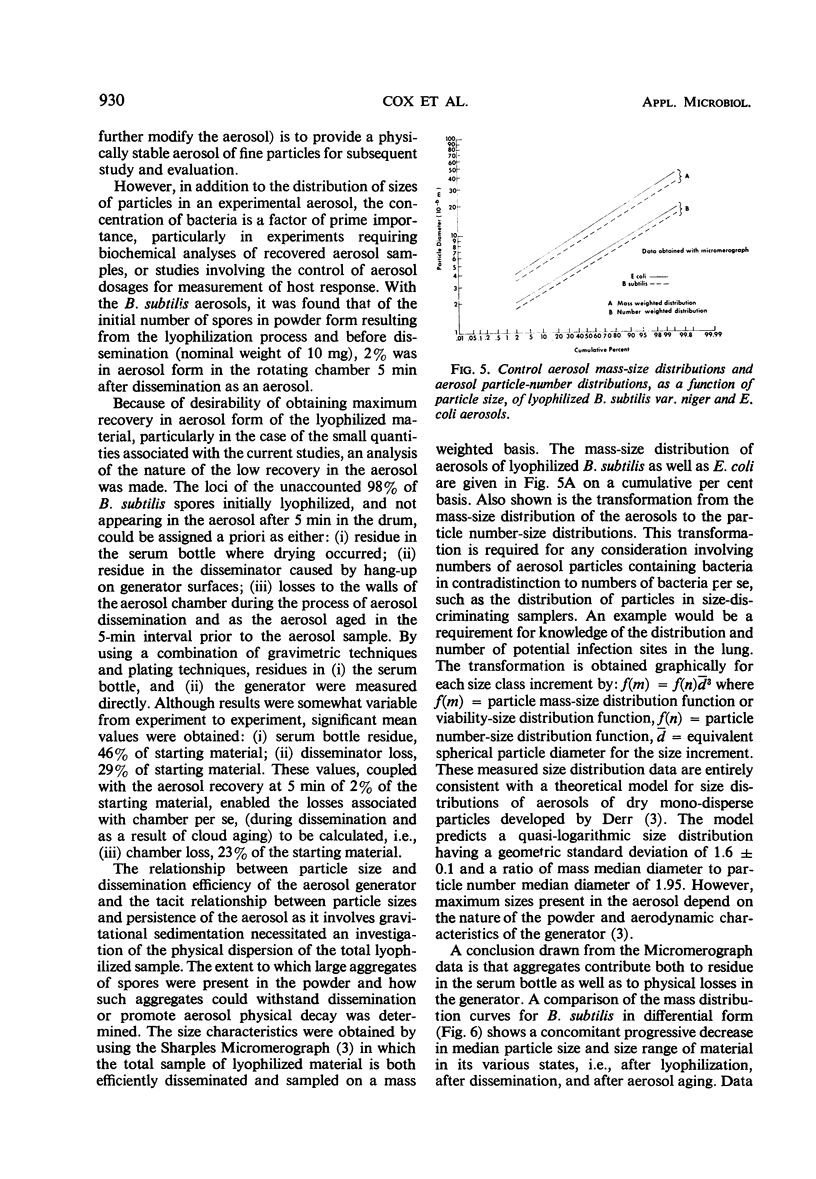
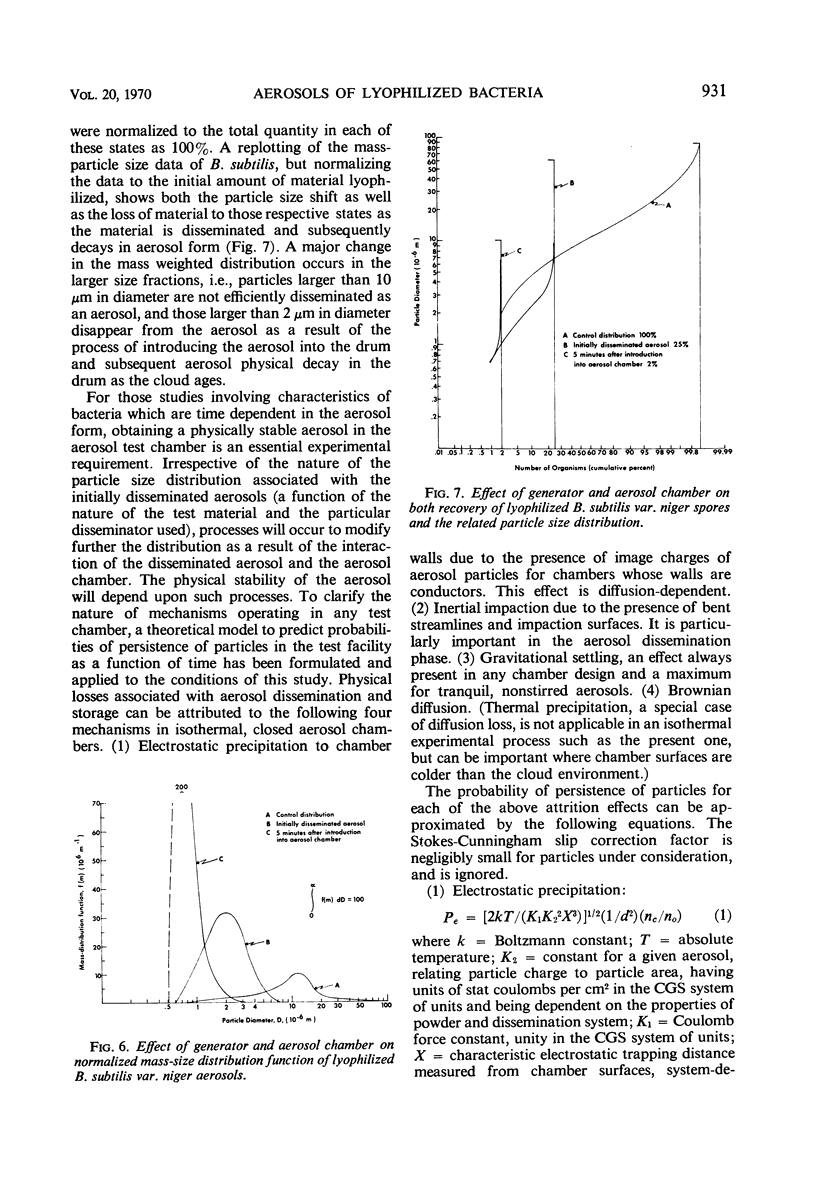
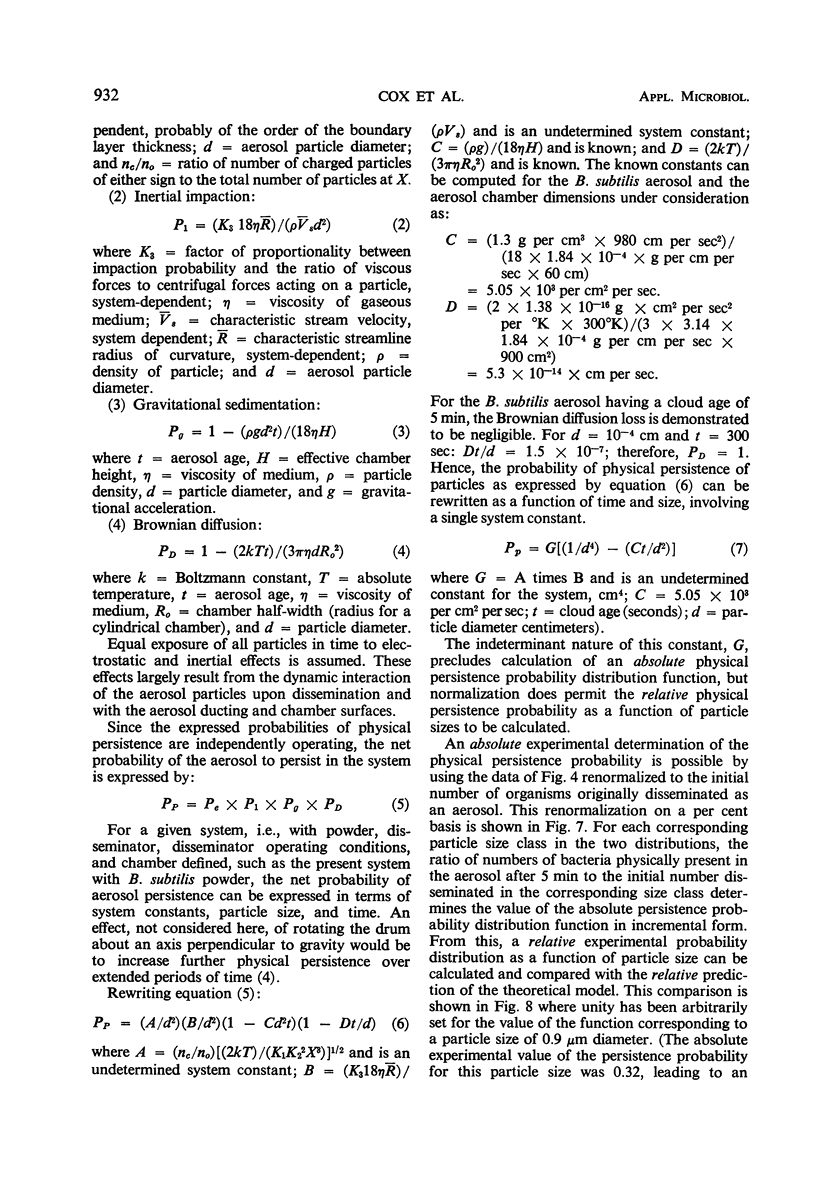
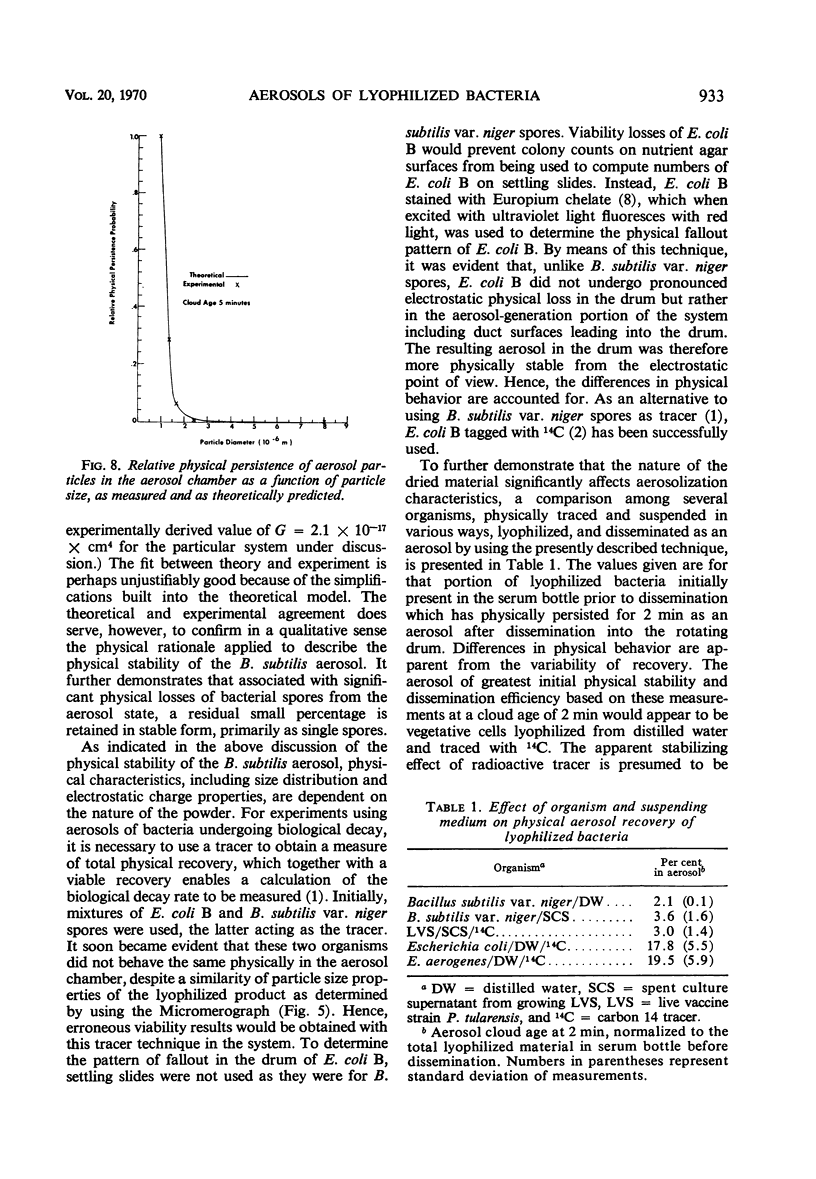
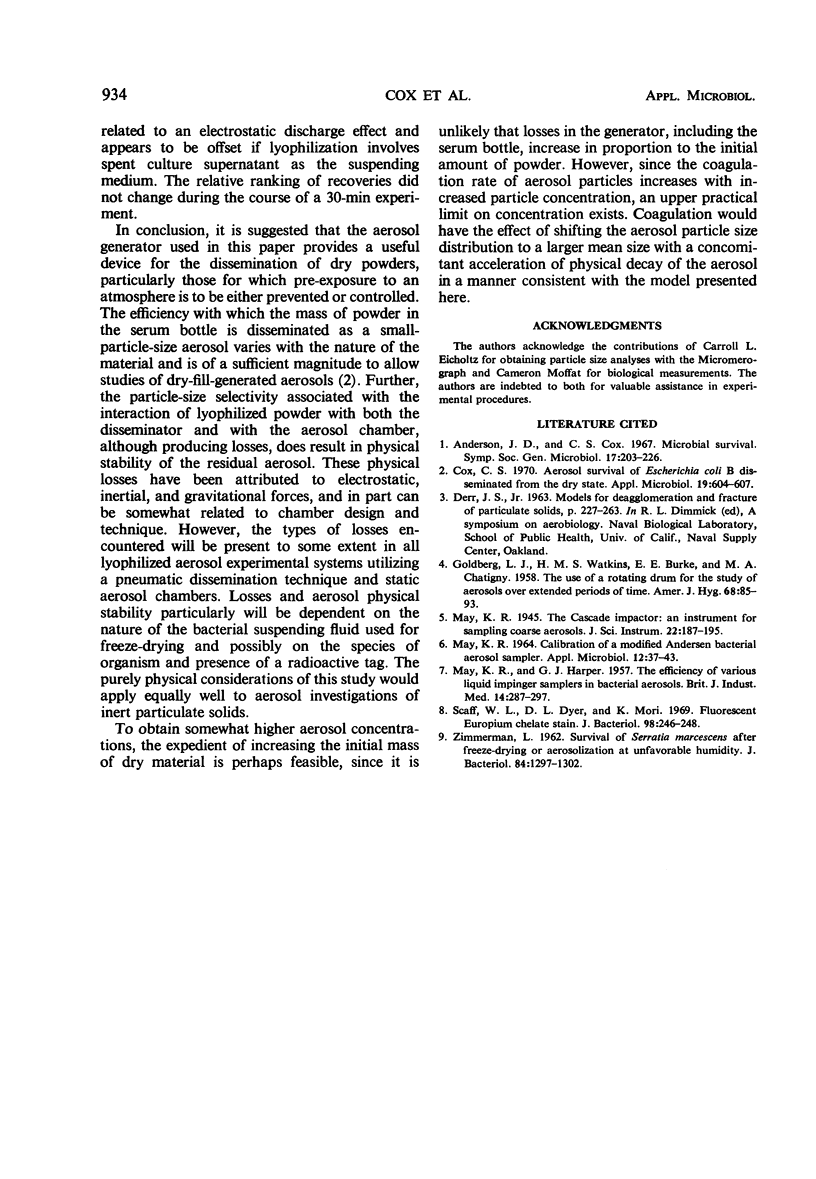
Selected References
These references are in PubMed. This may not be the complete list of references from this article.
- Cox C. S. Aerosol survival of Escherichia coli B disseminated from the dry state. Appl Microbiol. 1970 Apr;19(4):604–607. doi: 10.1128/am.19.4.604-607.1970. [DOI] [PMC free article] [PubMed] [Google Scholar]
- GOLDBERG L. J., WATKINS H. M., BOERKE E. E., CHATIGNY M. A. The use of a rotating drum for the study of aerosols over extended periods of time. Am J Hyg. 1958 Jul;68(1):85–93. doi: 10.1093/oxfordjournals.aje.a119954. [DOI] [PubMed] [Google Scholar]
- MAY K. R. CALIBRATION OF A MODIFIED ANDERSEN BACTERIAL AEROSOL SAMPLER. Appl Microbiol. 1964 Jan;12:37–43. doi: 10.1128/am.12.1.37-43.1964. [DOI] [PMC free article] [PubMed] [Google Scholar]
- MAY K. R., HARPER G. J. The efficiency of various liquid impinger samplers in bacterial aerosols. Br J Ind Med. 1957 Oct;14(4):287–297. doi: 10.1136/oem.14.4.287. [DOI] [PMC free article] [PubMed] [Google Scholar]
- Scaff W. L., Jr, Dyer D. L., Mori K. Fluorescent europium chelate sta. J Bacteriol. 1969 Apr;98(1):246–248. doi: 10.1128/jb.98.1.246-248.1969. [DOI] [PMC free article] [PubMed] [Google Scholar]
- ZIMMERMAN L. Survival of Serratia marcescens after freeze-drying or aerosolization at unfavorable humidity. I. Effects of sugars. J Bacteriol. 1962 Dec;84:1297–1302. doi: 10.1128/jb.84.6.1297-1302.1962. [DOI] [PMC free article] [PubMed] [Google Scholar]


